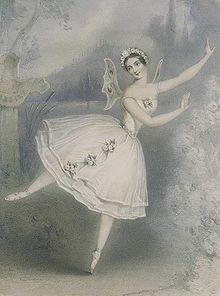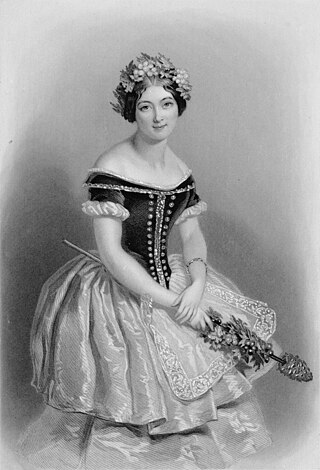
Giselle, originally titled Giselle, ou les Wilis, is a romantic ballet in two acts with music by Adolphe Adam. Considered a masterwork in the classical ballet performance canon, it was first performed by the Ballet du Théâtre de l'Académie Royale de Musique at the Salle Le Peletier in Paris on 28 June 1841, with Italian ballerina Carlotta Grisi as Giselle. It was an unqualified triumph. It became hugely popular and was staged at once across Europe, Russia, and the United States.

The Romantic ballet is defined primarily by an era in ballet in which the ideas of Romanticism in art and literature influenced the creation of ballets. The era occurred during the early to mid 19th century primarily at the Théâtre de l'Académie Royale de Musique of the Paris Opera Ballet and Her Majesty's Theatre in London. It is typically considered to have begun with the 1827 début in Paris of the ballerina Marie Taglioni in the ballet La Sylphide, and to have reached its zenith with the premiere of the divertissement Pas de Quatre staged by the Ballet Master Jules Perrot in London in 1845. The Romantic ballet had no immediate end, but rather a slow decline. Arthur Saint-Léon's 1870 ballet Coppélia is considered to be the last work of the Romantic Ballet. Romantic ballet is believed to have been experienced in three main phases: The zenith phase from 1830-1840, the decline phase from 1850-1880, and the revival phase in the 1890s prior to Diaghilev. Each phase is synonymous with the production of a few specifically stylized ballets.

Marius Ivanovich Petipa, born Victor Marius Alphonse Petipa, was a French and Russian ballet dancer, pedagogue and choreographer. Petipa is one of the most influential ballet masters and choreographers in ballet history.
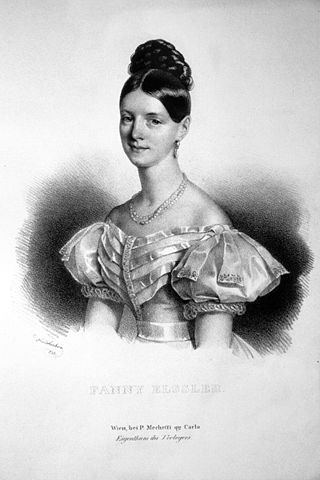
Fanny Elssler was an Austrian ballerina of the Romantic Period.
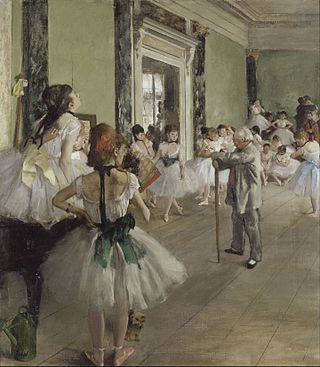
A ballet master is an employee of a ballet company who is responsible for the level of competence of the dancers in their company. In modern times, ballet masters are generally charged with teaching the daily company ballet class and rehearsing the dancers for both new and established ballets in the company's repertoire. The artistic director of a ballet company, whether a male or female, may also be called its ballet master. Historic use of gender marking in job titles in ballet is being supplanted by gender-neutral language job titles regardless of an employee's gender.
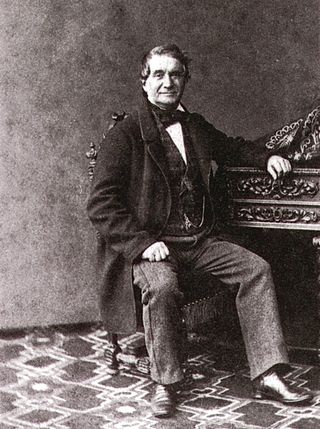
Cesare Pugni was an Italian composer of ballet music, a pianist and a violinist. In his early career he composed operas, symphonies, and various other forms of orchestral music. Pugni is most noted for the ballets he composed for Her Majesty's Theatre in London (1843–1850), and for the Imperial Theatres in St. Petersburg, Russia (1850–1870). The majority of his ballet music was composed for the works of the ballet master Jules Perrot, who mounted nearly every one of his ballets to scores by Pugni. In 1850 Perrot departed London for Russia, having accepted the position of Premier maître de ballet of the St. Petersburg Imperial Theatres at the behest of Carlotta Grisi, who was engaged as Prima ballerina. Cesare Pugni followed Perrot and Grisi to Russia, and remained in the imperial capital even after Grisi's departure in 1853 and Perrot's departure in 1858. Pugni went on to compose for Perrot's successors Arthur Saint-Léon and Marius Petipa, serving as the Imperial Theatre's official composer of ballet music until his death in 1870. He was also the grandfather of Russian painter Ivan Puni, also known as Iwan Puni and Jean Pougny.

The Salle Le Peletier or Lepeletier was the home of the Paris Opera from 1821 until the building was destroyed by fire in 1873. The theatre was designed and constructed by the architect François Debret on the site of the garden of the Hôtel de Choiseul on the rue Lepeletier. Due to the many changes in government and management during the theatre's existence, it had a number of different official names, the most important of which were: Théâtre de l'Académie Royale de Musique (1821–1848), Opéra-Théâtre de la Nation (1848–1850), Théâtre de l'Académie Nationale de Musique (1850–1852), Théâtre de l'Académie Impériale de Musique (1852–1854), Théâtre Impérial de l'Opéra (1854–1870), and Théâtre National de l'Opéra (1870–1873).

Jules-Joseph Perrot was a French dancer and choreographer who later became Ballet Master of the Imperial Ballet in St. Petersburg, Russia. He created some of the most famous ballets of the 19th century including Pas de Quatre, La Esmeralda, Ondine, and Giselle with Jean Coralli.

Jean Coralli was a French ballet dancer and choreographer, best known for collaborating with Jules Perrot in creating Giselle (1841), the quintessential Romantic ballet of the nineteenth century.
La Esmeralda is a ballet in three acts and five scenes, inspired by the 1831 novel Notre-Dame de Paris by Victor Hugo, originally choreographed by Jules Perrot to music by Cesare Pugni, with sets by William Grieve and costumes by Mme. Copère.

Pehr Christian Johansson was a teacher, choreographer and balletmaster for the Russian Imperial Ballet. He was engaged at the Royal Swedish Ballet in 1829–41, and at the Imperial Russian Ballet in 1841–66.
Lydia, the Swiss Milkmaid is a Demi-Caractère ballet in 2 acts, with choreography by Filippo Taglioni and music by Adalbert Gyrowetz.
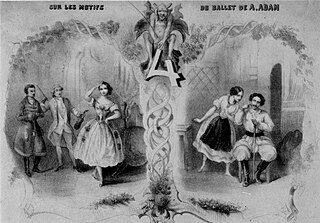
Le Diable à quatre is a ballet in two acts and three scenes, with choreography by Joseph Mazilier, music by Adolphe Adam, and libretto by Adolphe de Leuven, first presented by the Ballet of the Académie Royale de Musique on 11 August 1845, with Carlotta Grisi and Lucien Petipa.

La Péri is a fantastic ballet choreographed by Jean Coralli (1779-1854) to music composed by Friedrich Burgmüller. With a scenario devised by Théophile Gautier and Coralli, scenery designed by Charles Séchan, Jules Diéterle, Édouard Desplechin, Humanité Philastre, and Charles Cambon, and costumes designed by Paul Lorimer and Hippolyte d'Orshwiller, it was first presented by the Paris Opera Ballet at the Académie Royale de Musique on 17 July 1843.

Adèle Alphonsine Dumilâtre was a French dancer, famous in the days of romantic ballet. After her marriage to Francisco Drake del Castillo she became a Countess.

Carolina Rosati (1826–1905) was an Italian ballet dancer who gained fame with the Paris Opera Ballet and the Imperial Ballet in St Petersburg.

Elena Ivanovna Andreïanova, sometimes spelt Yelena Andreyanova, 13 July 1819 St. Petersburg - 28 October 1857 Paris, was a Russian ballerina. She is considered to be the outstanding Russian ballerina of the romantic genre, but her life was one full of tragedy.

Sofia Fuoco, was an Italian ballerinn, born as Maria Brambilla; her stage name, Fuoco means ″Fire″ in Italian.

Augusta Maywood, born Augusta Williams, was the first American ballerina to gain international recognition. In a career spanning forty-four years, she danced at the Paris Opera and became prima ballerina at both the Teatro Nacional de São Carlos in Lisbon and La Scala in Milan. Maywood was the first ballerina to have her own touring ensemble company.
